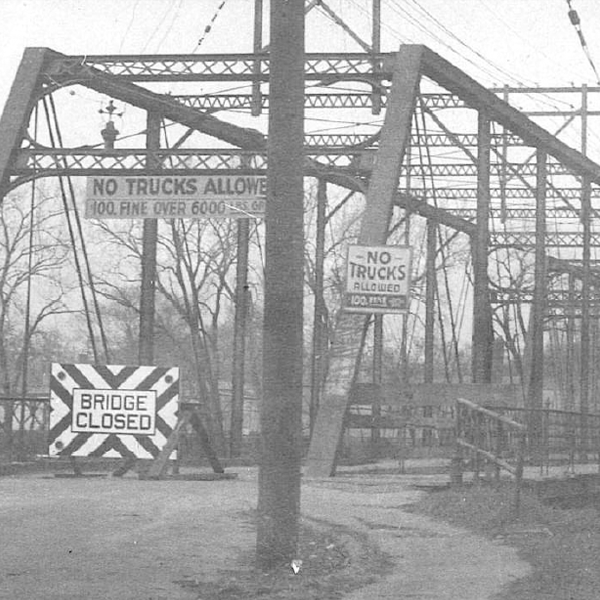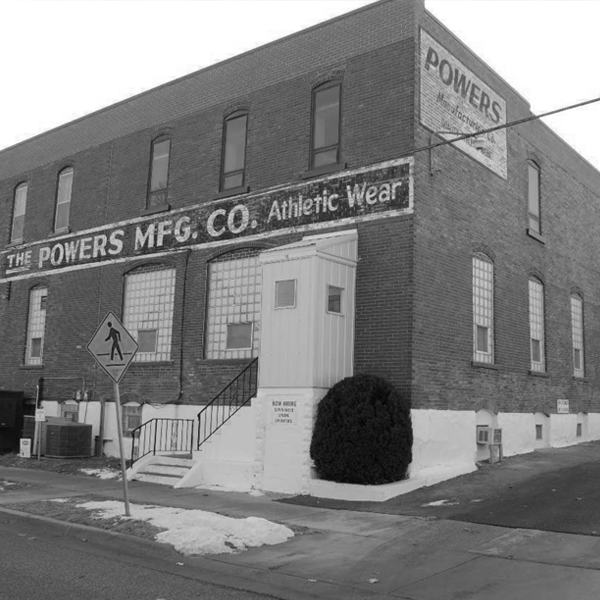Waterloo Bridges Project
Public Awareness Website
Waterloo Bridges Over the Cedar History
Park Ave Bridge | 11th Street Bridge
Park Avenue Bridge
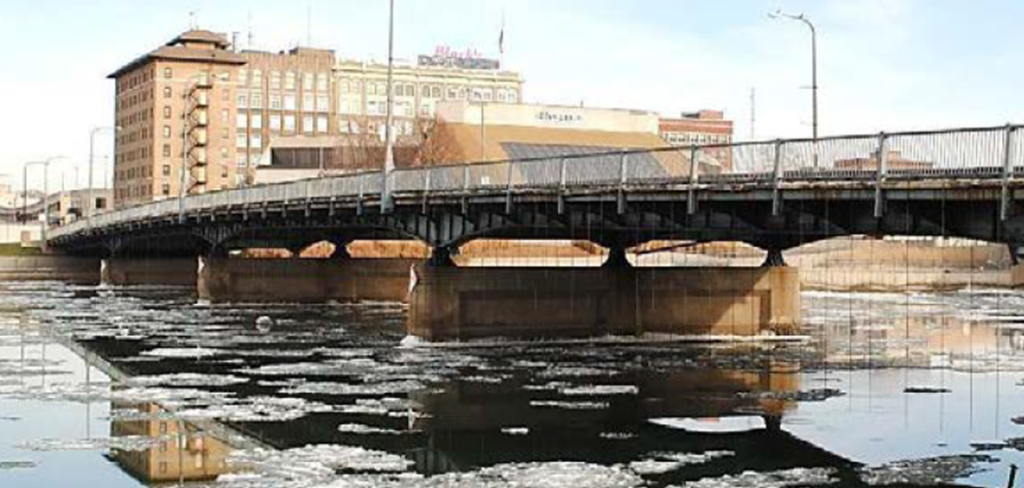
The Waterloo Park Avenue bridge over the Cedar River was built in 1938. It is the only bridge that has been built at this location. The bridge needs replacement due to its age and condition. It is posted to limit heavy loads crossing it. Originally it carried U.S. Highway 63 across the river, however by 1970 the highway designation was removed from this corridor.

The city of Waterloo was able to obtain funding and resources through the Public Works Administration (PWA) to build the Park Avenue bridge. It was designed by Sverdrup & Parcel, Consulting Engineers, St. Louis, Missouri. It was built by A. Guthrie and Company of St. Paul, Minnesota and the A. Olson Construction Company of Waterloo. The PWA was a Federal New Deal program of the Great Depression era, specifically created by the national Industrial Recovery Act of June 1933. The PWA built large-scale public works such as dams, bridges, hospitals, and schools.
The Park Avenue bridge is a 615-foot riveted deck plate girder bridge with curved haunches. It has two 105-foot spans and three 135-foot spans. The deck (driving surface) was designed to carry four traffic lanes between the plate girders along with two cantilevered 6-foot sidewalks. Recently, the bridge lanes have been reallocated to include two new bike lanes by reducing the number of traffic lanes to two. The sidewalks are cantilevered beyond the girders on both sides.
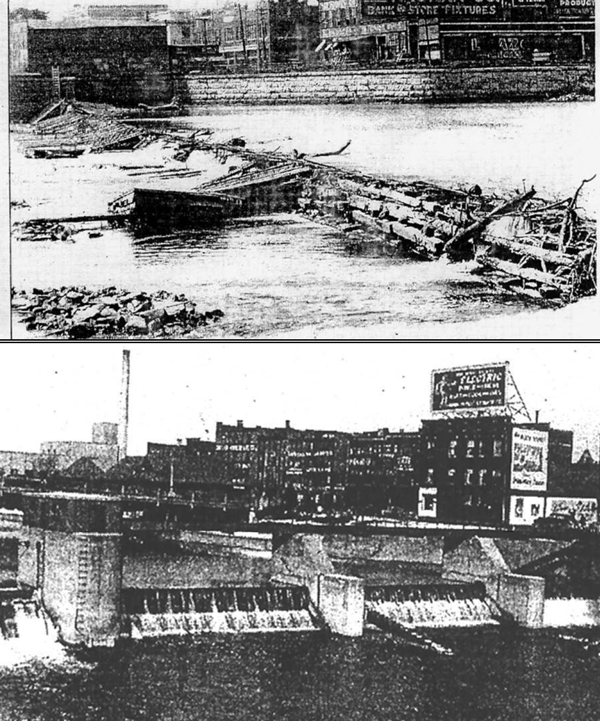
The bridge is still the original width, retains its original railings, lamp post bases, and concrete pier supports under the bridge. It exhibits modest stylistic influence from the Modern style of architecture, specifically in the oval-plan pier supports that have four horizontal lines around the pier cap, inset panels on the pier faces, in the curving railing, and concrete lamp post bases that are stepped on the sides at the abutments (ends) of the bridge. The bridge design includes four concrete pier supports in the river, steel piling, steel handrails and lamp posts.
Sverdrup and Parcel, Consulting Engineers was founded in 1928 and was known for designing Sportsman’s Park in St. Louis for the St. Louis Cardinals’ baseball team in 1937, and later designed the first Busch Stadium in 1966 for the Cardinals.
Park Avenue was originally named Main Street with the idea that commercial development would be along this early street. However, the first bridge in Waterloo was built at Fourth Street and that street instead became the main commercial hub on both sides of the river. While the current bridge is the only bridge originally at this location, previously there was a nearby river ford used during the westward movement in the 1800s before ferries existed in the area.
By 1918, the area around Park Avenue was part of the “congested district” of Waterloo. The Union Mill Company’s Cedar Mills was established on the north bank downriver from E. Park Avenue. The Union Mill Company’s City Mill was on the south side of the river downriver from W. Park Avenue, but its raceway served as the north end of Park Avenue for many years. The race was backfilled by the late 1930s prior to the construction of the Park Avenue Bridge. The Illinois Central Railroad built their freight depot and passenger station near Park Avenue along Water Street, and E. Park Avenue saw the erection of larger brick stores and warehouses. The west side of Park Avenue saw development a bit sooner including the Nauman Manufacturing Company, an opera house, and a Lutheran church.
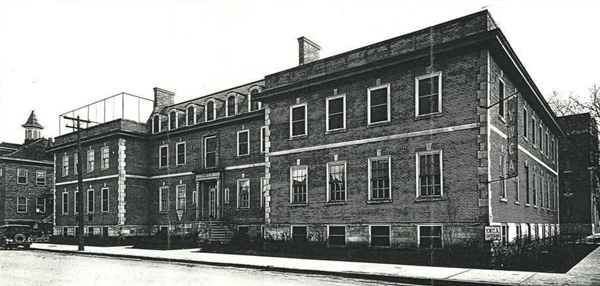
By 1918 most sections along east and west Park Avenue had been mostly infilled with stores, warehouses, social organizations and a federal building on the east side. Additional 1930s-era buildings constructed in the W. Park Avenue area included the YMCA building built in 1930 and current Waterloo Public Library, originally built in 1937 as part of another federal program as the new post office and federal court building. The major industrial plants and factories of the late 19th and 20th centuries were located upriver (John Deere) and downriver (Rath Packing Plant).
11th Street Bridge
The current 11th Street bridge was built in 1953. It replaced an older 1887 steel through truss bridge that had been moved to 11th Street in 1908 from 5th Street. The current bridge needs replacement due to its age and condition. It is posted to limit heavy loads crossing it. The 11th Street bridge never carried a state or federal highway; however, it did carry heavy loads due to the number of industries in the area including the Rath Packing Plant.
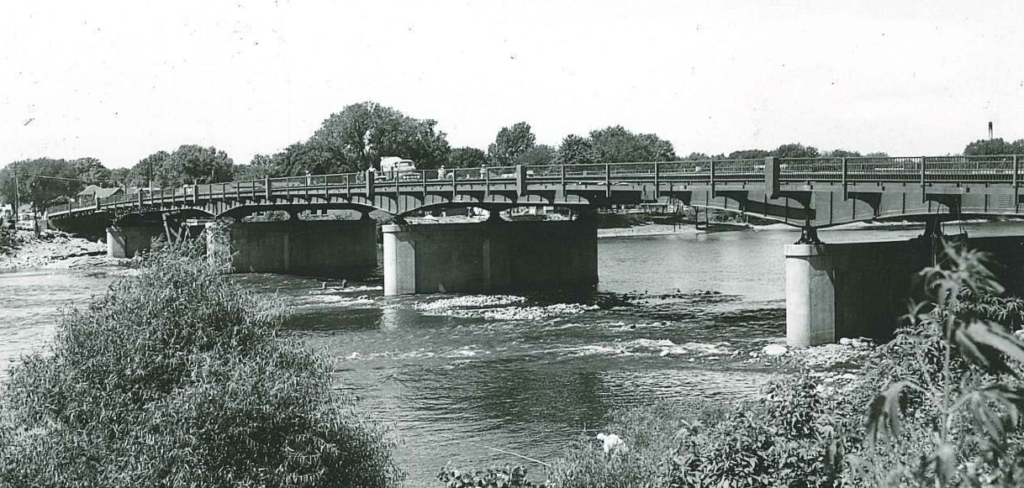
The differences in the two bridges (the current 11th Street and Park Ave. bridges) are subtle, with the concrete piers on the 11th Street bridge lacking the scored parallel lines around their pier caps that the Park Avenue bridge has and having only one cantilevered sidewalk whereas the Park Avenue bridge has two. The sidewalk on the 11th Street bridge is on the downriver side. Both bridges had dedication plaques attached, with the one on the 11th Street bridge still in place on the northeast corner of the bridge. That plaque lists the city administrators at the time of the bridge construction including Mayor, L.A. “Pat” Touchae, the city council members, city clerk, solicitor, and the city engineer, Dean M. Larrabee, along with the 1953 date of construction. The bridge has retained its original steel railing, lamp post bases, and concrete piers.
The design plans for the current 11th Street bridge label the bridge design as having been adapted from Sverdrup & Parcel’s 1938 plans for the Park Avenue bridge. Kirkham, Michael and Associates of Omaha, Nebraska (1953) adapted these plans for the city of Waterloo. Both bridges are riveted steel deck plate girder bridges with curved haunches and concrete decks, abutments, and four piers. Both bridges are 615 feet long with two 105-foot spans and three 135-foot spans. The 11th Street bridge has four 12-foot lanes, and one 6-foot sidewalk. It exhibits modest stylistic influence from the Moderne style of architecture, similar to the Park Avenue bridge, specifically in the oval-plan pier supports and inset panels on the pier faces. The bridge is still the original width, retains its original steel railings, lamp post bases, and concrete pier supports under the bridge.
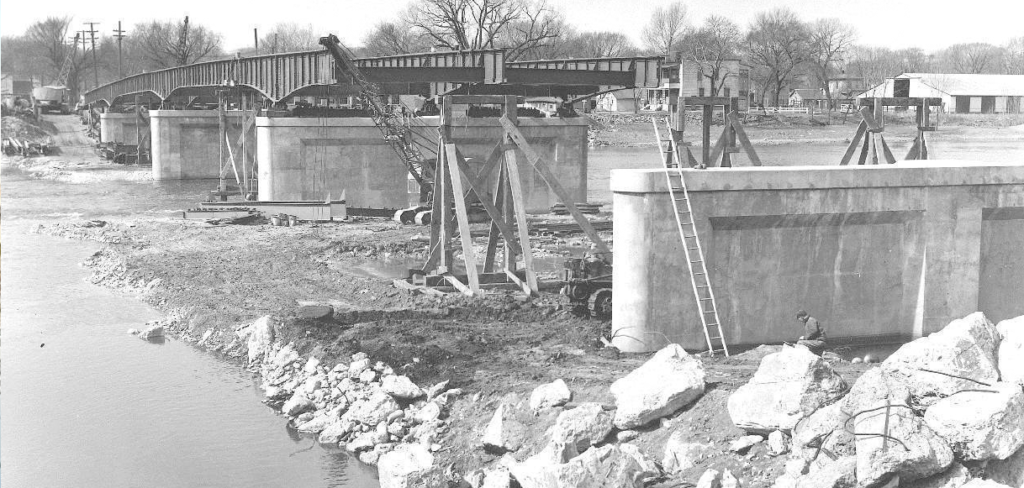
Many of the areas near the 11th Street bridge were not well developed until the 1890s and beyond. This area was slower to develop and was largely residential in its earliest development becoming more industrial once the extension of the railroad beltline and spur lines into this area helped fuel industrial growth. In the late 19th to late 20th centuries, the undeveloped area on the north side of the river southeast of 11th Street would be the site of one of the two major industrial complexes in Waterloo – the Rath Packing Plant. By the mid-1950s, Rath had a 40-acre plant in Waterloo that employed about 8,200 workers. Fueled by industrial growth, Waterloo had become one of Iowa’s major urban areas having a population over 100,00 by the late 20th century.
Within the 11th Street area, smaller light industries included the A.W. Morrill Soap Factory, Goodman & Sons Machine Shop, A.B. Hawver’s Vinegar Works, the Waterloo Brass Foundry, Powers Manufacturing and the Waterloo Boiler Works. Eventually the vinegar factory and boiler works building became part of the Citizens Gas & Oil Company, which evolved into Citizens Gas & Electric Company followed by the Iowa Public Services Company and then MidAmerican Energy Company. Automobile and truck-related businesses began to characterize the 11th Street corridor, including filling and service stations on both sides of the river and automobile dealerships and truck shops on W. 11th Street in the early to late 20th century and into the present day.
The following 1950s aerial image of the industrial complex that developed between 11th and 18th street shows this complex at its peak and includes the extensive Rath Plant in the foreground and the smaller industrial complex noted above in the background. The smaller industrial complex became the Citizens Gas & Electric Company.
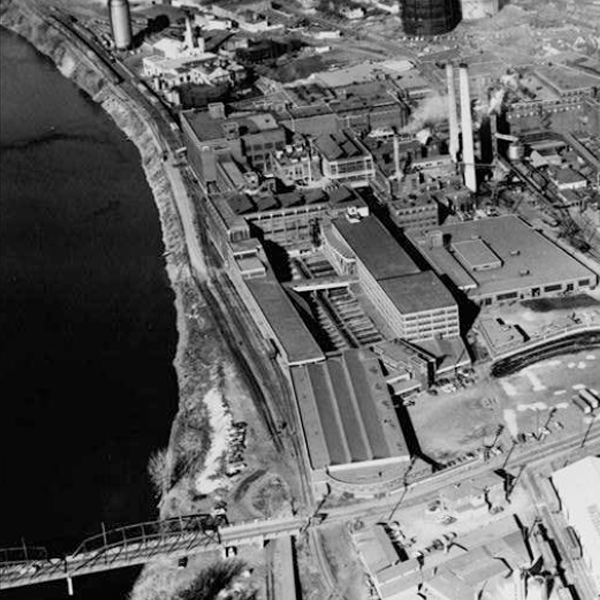
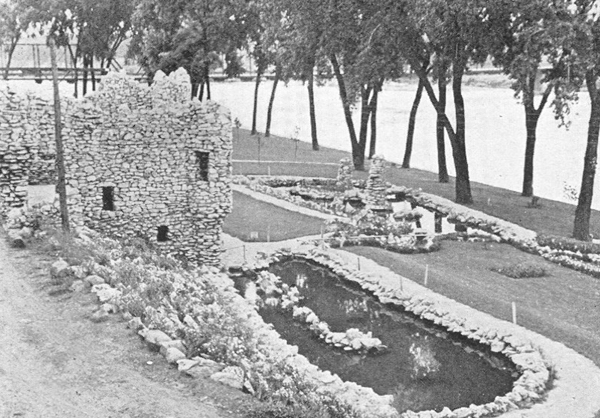
One early recreational development in the 11th Street area was Pioneer Park, which was built along the northeast bank of the river between 7th and 11th streets in the mid-1930s as a Civilian Conservation Corps Project. Many of the park structures remained standing until 1981 when the levee and floodwall system was built. The stone walkway along the river’s edge is the only remaining structure from the former Pioneer Park.
